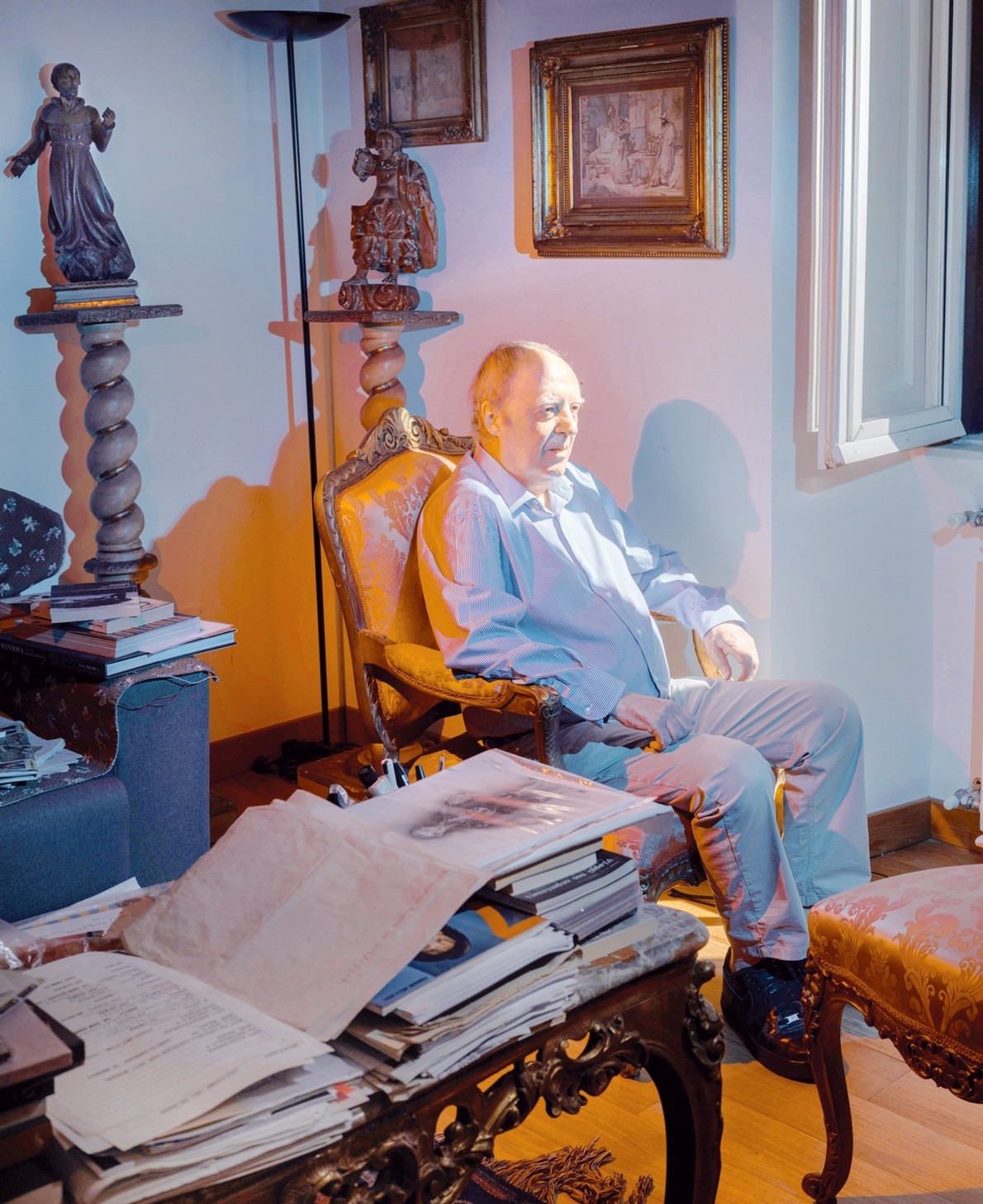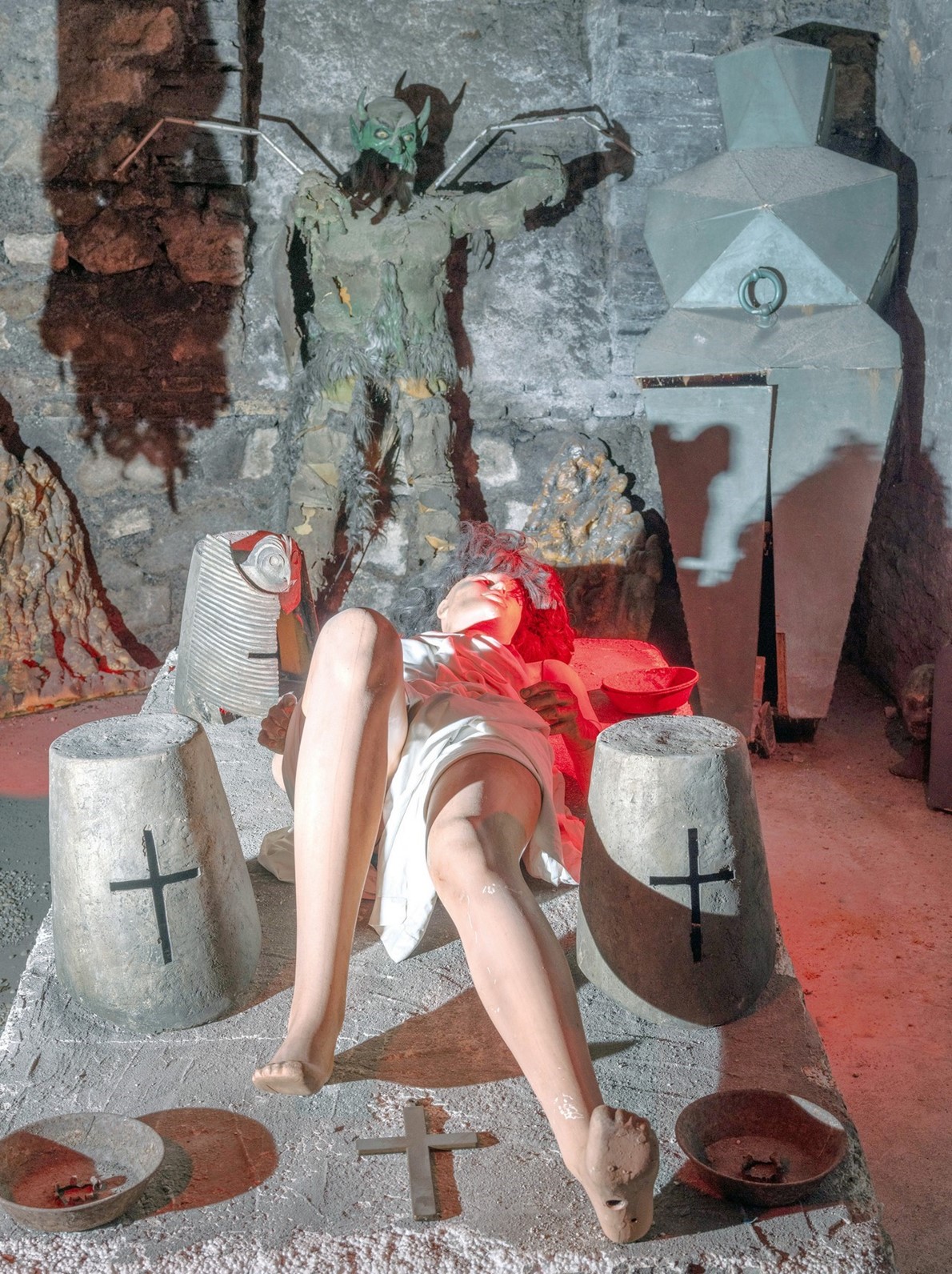ROME — For a man who has spent nearly 50
years scaring the pants off movie audiences, Italian director Dario Argento
does not come across as frightening at all.
اضافة اعلان
Soft-spoken, even a bit reserved,
Argento was
anxious to wrap up a recent interview so that he could see his grandchildren —
the offspring of his daughter, actress Asia Argento — before traveling the next
day to New York, where “Beware of Dario Argento: A 20-film Retrospective” is
running at Lincoln Center through Wednesday.
“I won’t see them for a while,” he said of the
children, before shooing his interviewer out the door. Hardly the modus
operandi of a “master of horror.”
But that does not mean that Argento, 81, is not
still up for a bit of mayhem or gore.
His most recent film, “Dark Glasses,” which
premiered in February at the Berlin International Film Festival and had its
North American debut in the Lincoln Center retrospective, delivers classic
Argento moments: throbbing music that usually bodes badly; gruesome,
blood-oozing murders; nail-biting chases (this time involving a blind
protagonist); and plenty of plot twists. Yet the film is also surprisingly tender:
At its heart is a relationship between a woman and a young boy whose lives
intertwine through tragedy.
“The film is different from others that I’ve made,”
and the finale even has room “for a little tear,” Argento said in the
antiques-stuffed living room of his home in an upscale Rome neighborhood. A
bulging bookcase along one wall was littered with some of the many awards he
has won during his long career.
Two recent additions are prizes he picked up in
August at the Locarno Film Festival in
Switzerland. One was a lifetime
achievement award that was presented to him by director John Landis, who said
at the ceremony that he had insisted on giving the prize to Argento in person.
The other was in recognition for his debut acting role in “Vortex,” Gaspar Noé’s
moving film about the decline of an elderly couple. (Argento had a bit role as
an altar boy in a 1966 movie, but it was uncredited.)
 Filmmaker Dario Argento at his home in Rome, on June 14, 2022.
Filmmaker Dario Argento at his home in Rome, on June 14, 2022.
It’s quite a career arc for a man who first worked
as a journalist and then film critic for a left-wing Rome newspaper; co-wrote
the story for Sergio Leone’s classic “Once Upon a Time in the West” (1968) with
Leone and Bernardo Bertolucci; collaborated with George A. Romero on the zombie
apocalypse classic “Dawn of the Dead” (1978); and recently wrote two books — an
autobiography, called “Fear,” and an anthology of scary stories, titled
“Horror” (2018).
Argento said that he got his first scare as a small
child when his parents — his father was a film producer, his mother a famous
photographer — took him to see a production of “Hamlet” in Rome. When the ghost
of Hamlet’s father appeared, young Argento went “into convulsions,” he
recalled, and yet he was also intrigued. “A seed was planted and it grew,” he
said.
And it continues to grow. The day after his work on
“Vortex” was done, Argento was at work on “Dark Glasses,” whose filming had
been delayed by the pandemic.
“Dark
Glasses” is an Italian “giallo” film — a broad genre that can contain elements
plucked from murder mysteries, detective crime or horror, including the slasher
subgenre. Argento is the living master of giallo movies.
True to form, the deaths in “Dark Glasses” are
in-your-face violent, starting with the garroting of a female prostitute early
in the film. Brutally murdered women are a troubling leitmotif in giallo
movies, though Argento countered that he had also “killed off plenty of men” in
equally gruesome ways.
And, he added, he had written courageous female
roles, too, especially those portrayed by his daughter Asia, who was his
leading lady for many years. “She’s played many strong characters,” he said.
Argento burst onto the Italian movie scene in 1970
with “The Bird With the Crystal Plumage,” a stylish and visually lush giallo
film that established him as a rising cinematic star and garnered him the
nickname “the Italian Hitchcock.”
“Argento’s films are often full of these surprises,
these twists,” said Russ Hunter, an expert in Italian films who teaches at
Northumbria University in northern England. But Argento also brought to the
screen a “kind of bravura visual style” that went on to influence other
filmmakers and to establish him as a cult director with die-hard fans, Hunter
added.
 Profondo Rosso, the store opened by Argento and Luigi Cozzi in 1989, in Rome, on June 14, 2022.
Profondo Rosso, the store opened by Argento and Luigi Cozzi in 1989, in Rome, on June 14, 2022.
With “Deep Red” (1975), one of his most celebrated
films, Argento used kinetic camerawork and lush visuals to build drama (not to
mention the special effects of Carlo Rambaldi, who went on to win three
Oscars). In “Suspiria” (1977), light and color do the trick. “There’s such a
fantastic use of color saturation, which creates an otherworldly ambience,”
Hunter said. Contrasts in colors create moods that are “unsettling and
uncanny,” he added.
Luigi Cozzi, a director who has worked with Argento
on several films, recalled that it took him three months to find a camera that
could create an effect that Argento wanted for a slow-motion car crash in the
finale of “Four Flies on Grey Velvet.” Eventually, Cozzi found a camera that
shot 3,000 frames a second — used to monitor the wear and tear of wheels on
trains — at the University of Naples and rented it. The scene was about a
minute and a half long.
“Another
director would have made do with something else — not Dario,” Cozzi said in an
interview in a Rome shop called Profondo Rosso (Italian for Deep Red) that he
opened with Argento in 1989. The store is chock-full of horror paraphernalia,
books and movies, as well as masks and fake limbs, and it also houses a museum
dedicated to Argento, featuring objects from the director’s films (in the
basement, naturally). Argento pops in frequently and makes a scheduled
appearance every Halloween, Cozzi said.
“Dario innovated the language with which horror
films were made,” Cozzi added.
Of the 20 Argento films being shown at Lincoln
Center, 17 are premieres of high-definition restorations done at Cinecittà,
Italy’s national film company.
“We wanted to celebrate Dario Argento,” who is
experiencing a “rediscovery with a new generation of critics” said Chiara
Sbarigia, the president of Cinecittà, which co-produced the New York
retrospective. “We wanted him to have an official recognition, as well as a recognition
of our work and the work of our restorers,” she added.
Argento said that he probably wouldn’t stick around for the screenings.
“I don’t like to see them again. The ones that I’ve made, they’re done,” he said. “Now I am thinking of new things.”
Read more Culture and Arts
Jordan News




